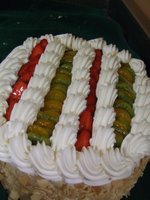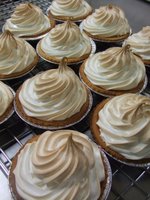Meringue based products.

Already this semester we have made several different meringue. These included a cold or French meringue and an Italian Merinue. In todays lesson we made the Pavlova, the great debate continues as to whether it oringated in New Zealand or Australia but they certainly looked appetising.
http://en.wikipedia.org/wiki/Pavlova_(food)
What did we learn? We discussed in class they following points:
- Preconditioning the egg whites to 27 degrees celcius is ideal for aeration of the eggs.
- Egg whites that are whisked to long will seperate, this results in the protein coagulating and the water content escaping, the whites will have a grainy texture. In a batter this will result in the egg whites losing their ability to aerate adequately.
- A French or cold meringue as it is sometimes referred to is unstable, this means it will collapse quickly once it has been aerated.
- Swiss meringues are more stable then a French meringue due to the partial coagulation of the protein in the egg when heat is applied and enables the sugar to dissolve more readily.
- An Italian Meringue uses a sugar syrup where the syrup is heated to 118 degrees celcius and then added to the whisked egg whites. It is the most stable of all the meringues.
Click on the following link to learn more about Meringues:
http://en.wikipedia.org/wiki/Meringue


0 Comments:
Post a Comment
<< Home